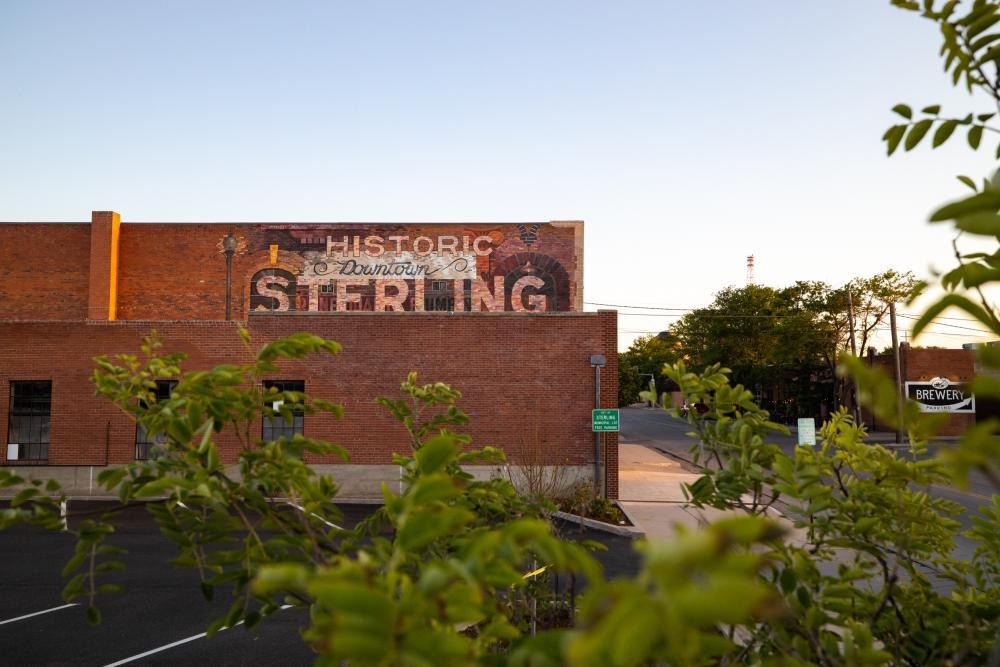
History of Sterling and Logan County
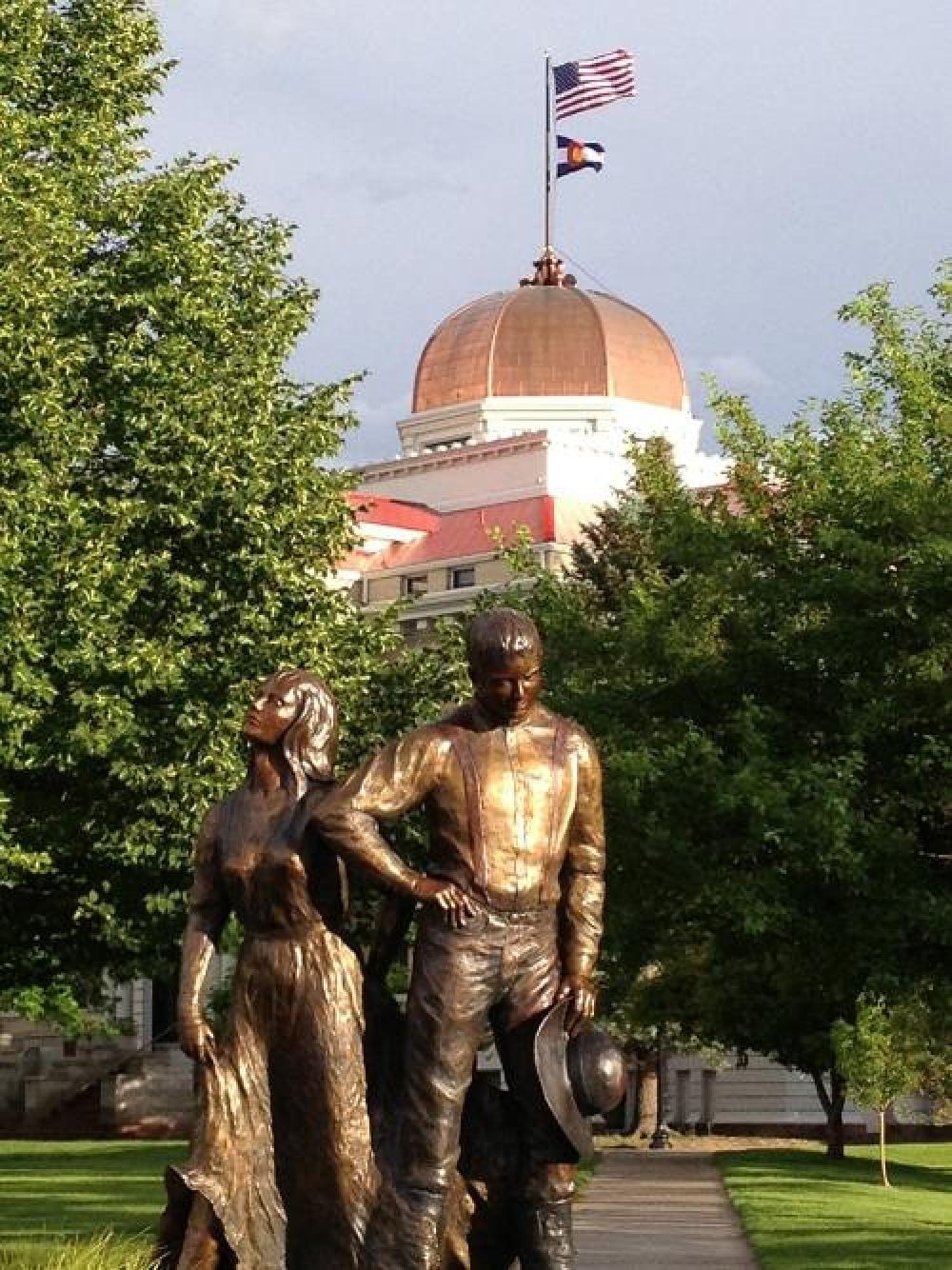
Logan County, Colorado
The first inhabitants of the plains were the Indians – Arapaho, Cheyenne, Crow, Blackfoot, Sioux, Kiowa and Pawnee. They survived and even thrived. The first non-Indians were French-Canadian trappers who passed through the area on their way to the beaver-rich foothills of the Rockies. They stayed only as long as there was a demand for the pelts and then moved on. Explorers such as Stephen H. Long passed through what is now Logan County on June 26, 1820. He referred to this area as “The Great American Desert.”
Discovery of gold in California in 1849, and ten years later in the Colorado mountains, made the Overland Trail (a branch of the Oregon Trail) the most heavily traveled road in the country by miners, fur traders, settlers and Indians who used the “superhighway” of the high plains. The South Platte Section of the Overland Trail reached diagonally across Logan County, bringing thousands of brave and adventurous people across the unmarked prairie.
You can take a scenic, rural drive into the past to “meet” these ghosts of Colorado pioneers. Some of the sites are marked, so you can stand on the spot where the stagecoach passengers stopped at the sod buildings for their meals of buffalo, antelope, biscuits, coffee, and dried apple pie. Sites can be reached from 1-76 which passes through the sandhills, or from US Hwy 6 and US Hwy 138, which joins the small towns built between 1874 and 1908, with their early buildings still standing. There are good roads along the river in the Tamarack Ranch State Wildlife Area and from the Overland Trail Museum in Sterling to the town of Atwood by way of County Road 370, that roughly parallel the trail where wagon drivers cursed the endless sand and the insects and the heat of the treeless river bottom.
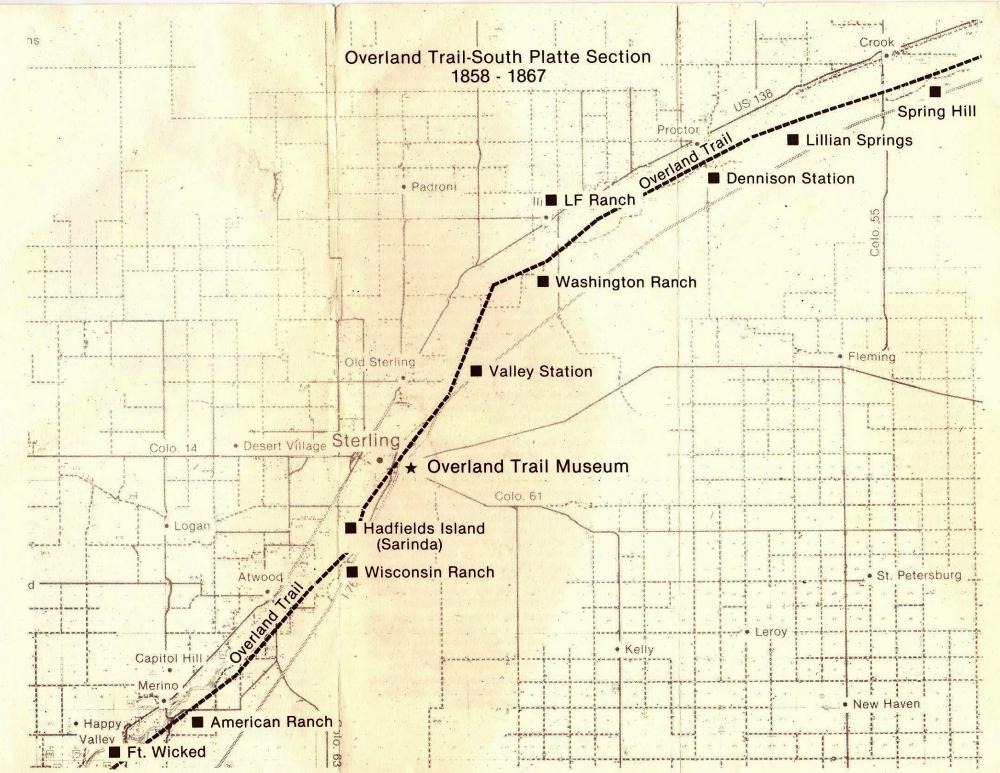
Settlers on the South Platte River
William Shaw Hadfield from Derbyshire England arrived in the area in 1871 and established his home on an island in the South Platte River, a few miles south of present-day Sterling. He named the island Sarinda. A post office was established there and newcomers to the area were made welcome on the island. Mr. Hadfield is credited with being the first permanent white settler in the area. Others came before him, but for various reasons, left the area.
The Civil War had left its mark on the South, so soon afterward eyes turned to the West and the land of opportunity and freedom. These people first settled in the Union Colony (present-day Greeley), but found the best farmland already taken, so came back east along the river and settled along its banks in an area about four miles north of the present townsite. Here they built sod huts and dugouts along the treeless river valley. They built the first irrigation ditch in 1873.
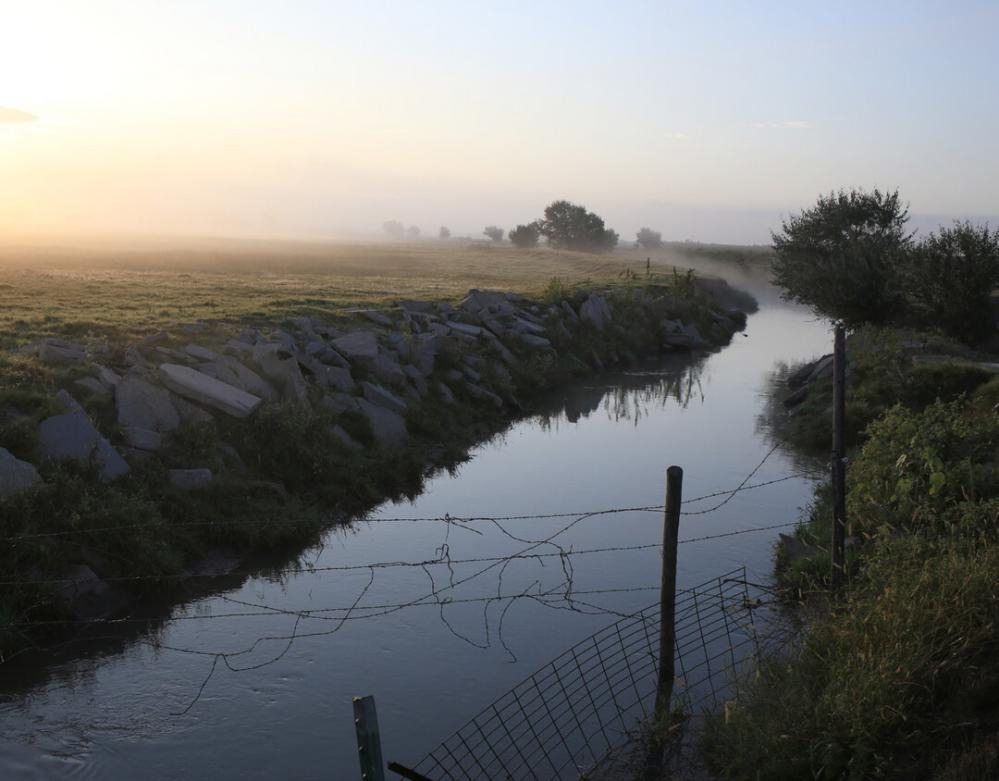
Photo by Colorado Foundation for Water Education DBA Water Education Colorado
In 1881 news reached the settlement that the Union Pacific Railroad was going to extend its line from Julesburg to LaSalle. The members of the Southern Colony at “old Sterling” knew that if a railroad came through this territory, a town would be established somewhere near their settlement. Pioneer leader Minos C. King, was elected to go to Omaha to meet with railroad officials to offer them 80 acres of land for a right-of-way if shops and a roundhouse were located there. The offer was accepted.
The land on which Sterling stands was preempted by John E. Boyd, who sold it to Mr. King for $400. The site for the new town was surveyed and platted by railroad surveyor David Leavitt, from Sterling, Illinois. While living in Sterling (Colorado) Mr. Leavitt was also Justice of the Peace, lawyer, civil engineer and the “general information bureau.” Mrs. Leavitt was a physician and rendered aid to the settlers in their times of need. She also became the first postmistress in the new town.
Sterling, The Queen City of the Platte
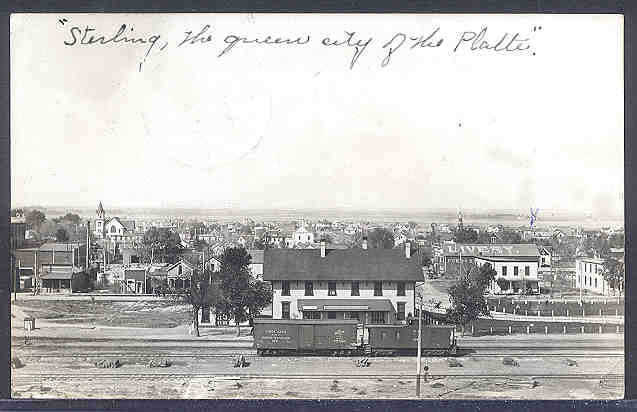
Sterling was incorporated in December 1884 and became the county seat of the newly formed Logan County in 1887. Logan County was formed by an act of the Colorado State Legislature on February 25, 1887. The County was formerly a part of Weld County and citizens from the eastern part of the state were required to travel to Greeley, the county seat to conduct official business. Citizens petitioned the state legislature to form the new county. Later on, Phillips and Sedgwick Counties were created from the original Logan County. Read more about Sterling here.
Historical Logan County Courthouse
The first Logan County courthouse went up at Third and Main Streets and was replaced by a new one built in 1909-10. The new building, with white-pressed brick and white stone trimming, cost approximately $100,000. On a Saturday in March of 1910, it is estimated that 6,000 persons participated in the formal opening ceremony for the eloquent new structure. In 1979, the Logan County Courthouse was placed on the National Register of Historic Places.
In 1999 then-County Commissioner James R. La Force spearheaded efforts to obtain grants from the State Historical Fund and the Colorado Department of Local Affairs Energy Impact Assistance Fund to restore one of the finest Courthouses in Colorado. The first phase of this multi-phased plan was completed in 2005 and included the installation of an elevator in the southwest quadrant of the building which takes passengers from the basement up to the first and second-floor areas. A secondary staircase was installed in the same area to allow for the removal of the unsightly exterior fire escape which finally was accomplished in Phase IV in September 2010.
A new Logan County Justice Center was completed in September 2003 and the court functions of the county were moved to that facility. The original steam radiators were replaced by individual heating and cooling units. This allowed for the removal of numerous unsightly window air conditioner units.
Interior office spaces were restored on all floors using historical paint color schemes. Original flooring was repaired and restored wherever possible. Windows and interior doors were refinished and in some cases, local craftsmen have replicated original doors, trim and counters that were removed in past remodeling efforts.
Exterior brick, stone and concrete masonry restoration were repaired and the North, East and West porches were replaced due to excessive concrete deterioration.
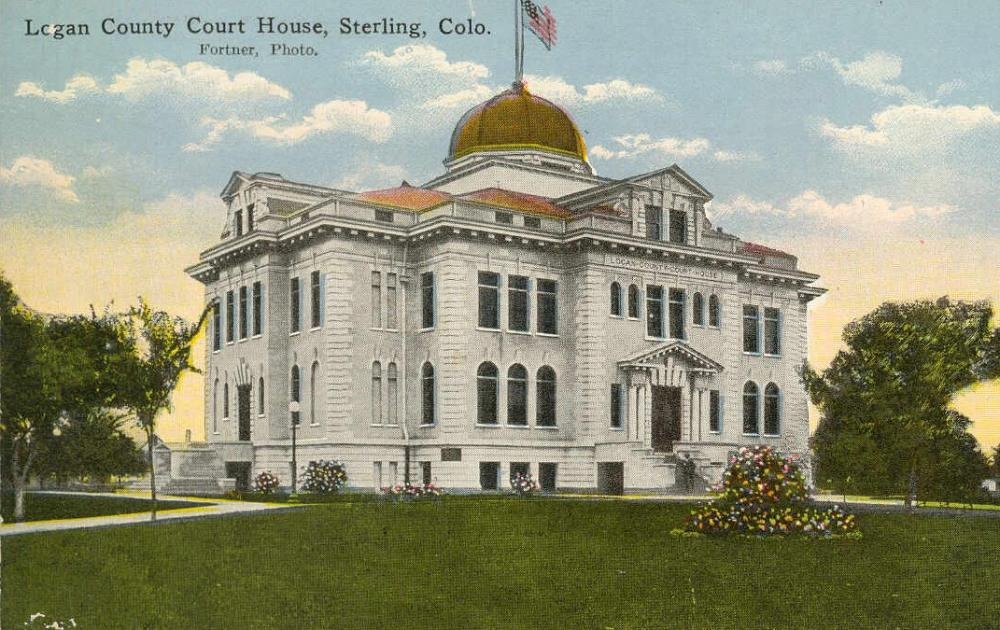
Total spent on the restoration was $5,343,764.18 which included grants from History Colorado State Historical Fund in the amount of $1,511,874.92 and State of Colorado Impact Assistance Funds in the amount of $1,125,007.21. County matching funds spent over the ten-year restoration period amounted to $2,706,882.05.
The last and final phase of restoration included the restoration of the courthouse dome to the original copper finish, replacement of the flag pole, roof and gutter repairs and remaining brick, stone and concrete masonry repairs. In 2013 a Flag Day Ceremony was held to commemorate the first flag flown over the courthouse in many decades. Congressman Cory Gardener’s office donated the flag which was once flown at the U.S. Capitol. The flag is now on display in the first-floor display case.
The Logan County Courthouse is open to the public Monday-Friday, 8 am – 5 pm. You can also take a virtual tour of this grand landmark, as well as eight other historical Sterling buildings, here.
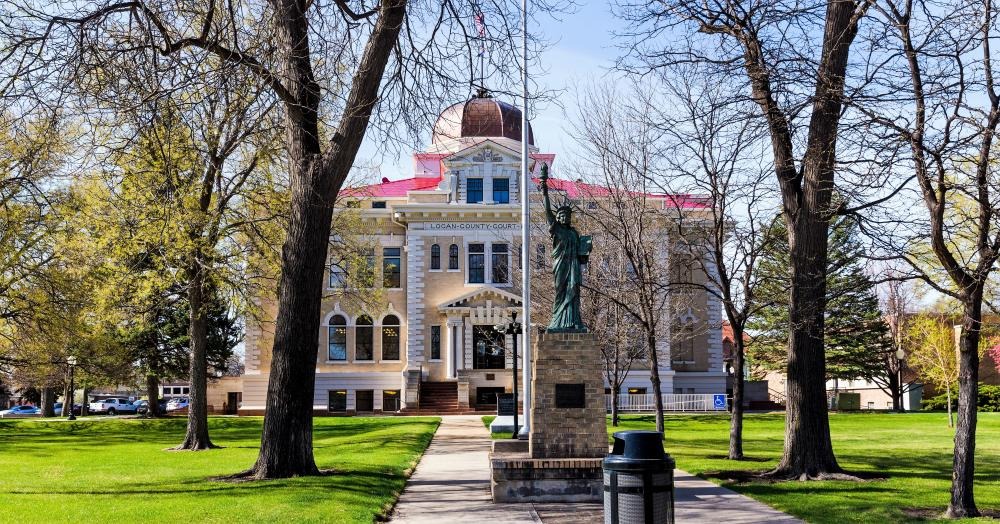
Read about Indian Wars and Native American History in Logan County in “A Brief History of Logan County, Colorado” with reminiscences by pioneers compiled and arranged for Elbridge Gerry Chapter Daughters of the American Revolution.
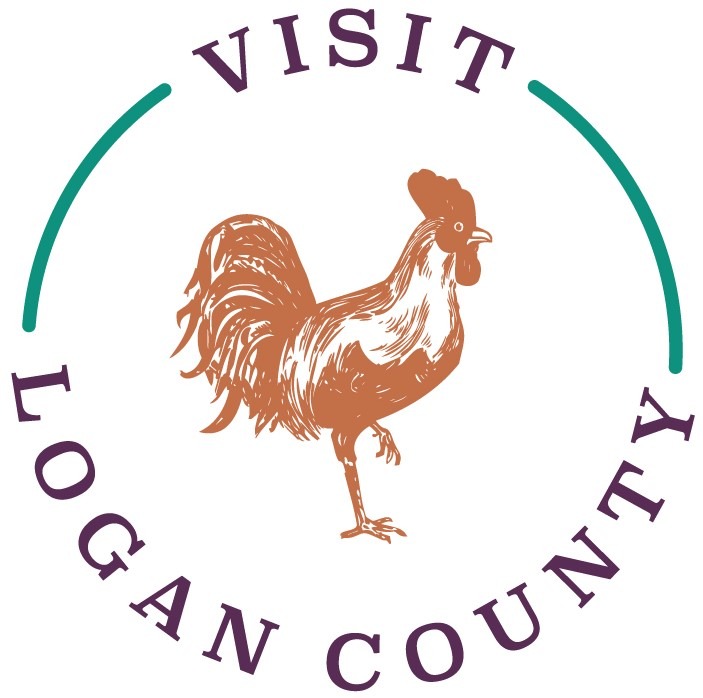
A Richer Heritage
Come visit these living histories and step back into the settlement of the west. Logan County map
FLEMING
Abandonment and resurrection
19 miles east of Sterling on U.S. Highway 6 East
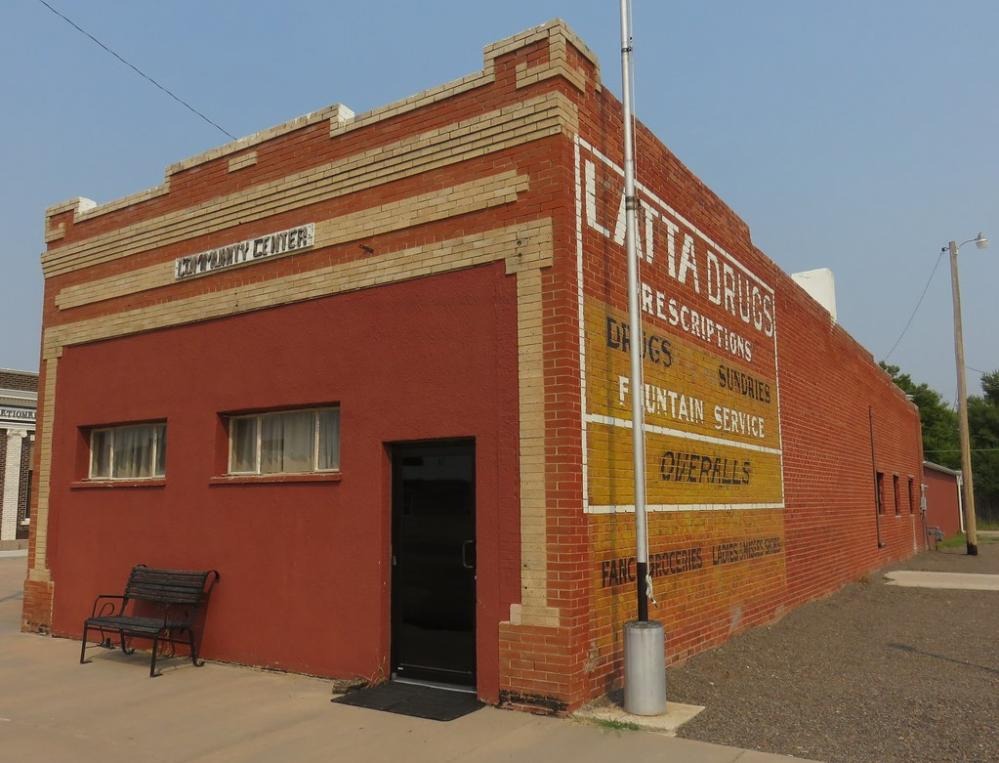
This community was first settled in the 1880s. It was resurrected in 1904 when the railroad arrived and brought with it a store and a bank. In 1938 Fleming had over 300 residents, two lumber yards, a telephone exchange, three elevators, blacksmith, hardware, drugstore, two mercantile, a cash store, meat market, hotel, restaurant, two garages, two theaters, newspaper, school, depot, a City Light and Water building, and a post office. Today, a pleasant park and museum are located at the west edge of town and it is here that you can get more information about Fleming’s history. It is a thriving little community with its own school district plus businesses and eating establishments like the extremely popular Bully’s Pub & Grub. Reservations are recommended!
MERINO
From buffalo hunters to carnival rides
13 miles southwest of Sterling on U.S. Highway 6
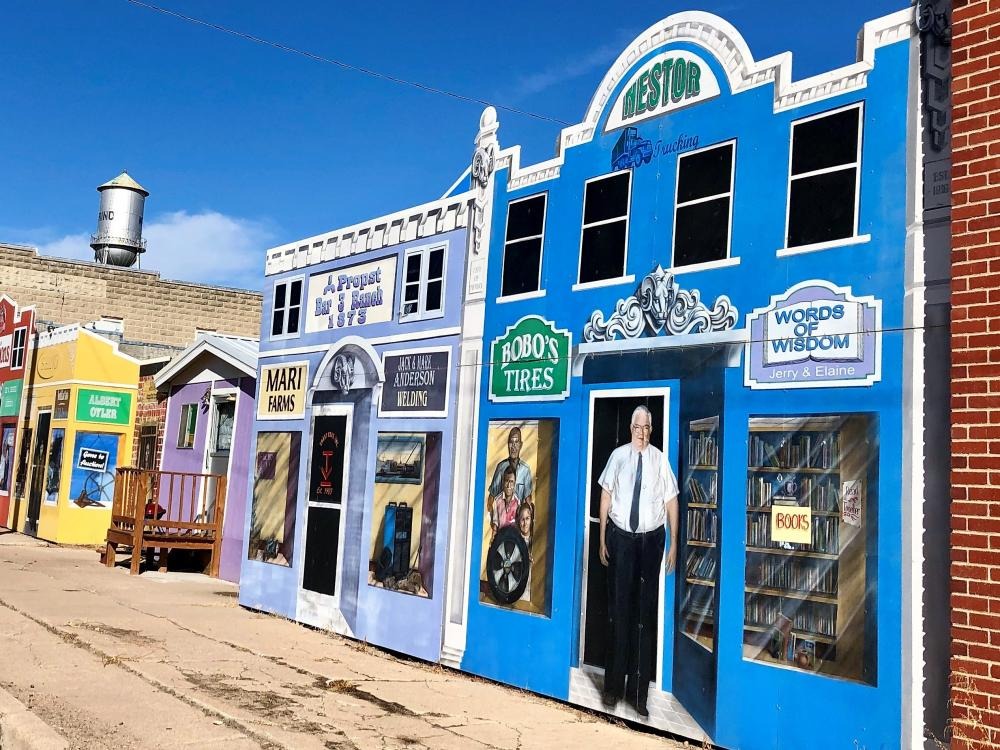
Some of the earliest settlers were the Holon Godfrey family who ran a stage stop in the 1860s called Fort Wicked as told on a commemorative marker 3.3 miles southwest of Merino on Highway 6. Settlers came to the nearby river bottom to put up hay and hunt buffalo to supply other pioneers using the South Platte Trail, and later to the railroad workers. When the railroad arrived in 1881, the original name of Buffalo was changed to Merino, and the town grew up northwest of the tracks. At one point in time, it was home to many small businesses as well as a large sugar beet dump and a pickle receiving station.
While much of the main street is now abandoned, it is recreated in a series of colorful storefront murals. What was once Shaw’s Hotel and grocery store now houses internationally recognized sculptor Bradford Rhea’s studio. The town is home to a thriving school district with one building complex serving grades K-12. The east side of the tracks is now home to Wisdom Manufacturing, one of only a handful of carnival ride manufacturers still existing in the world. Daily freight trains still make their way through Merino on their way to destinations further west.
ATWOOD
The big city that almost was
7 miles southwest of Sterling on U.S. Highway 6
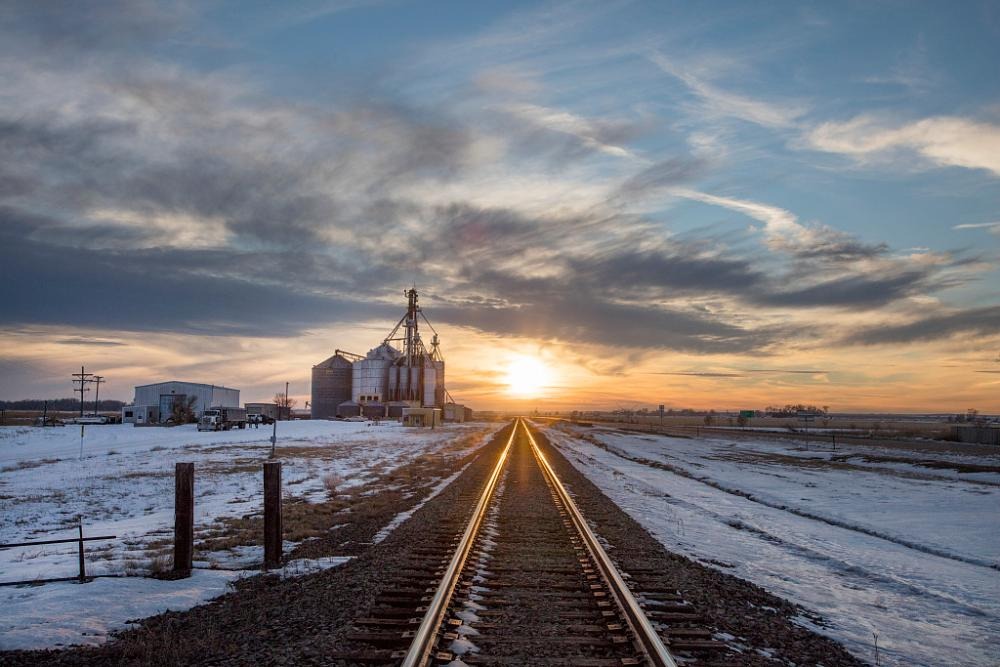
The first permanent resident of Logan County, Billy Hadfield, settled on an island in the river a few miles northeast of Atwood in 1841. There is a marker on U.S. Highway 6, 3.3 miles northeast of Atwood, indicating the location. By the 1880s a community had grown up at the present site and a town was platted in 1885. When Logan County was established in 1887 the town was hoping to become the county seat, and laid a foundation for a courthouse. When Sterling was chosen instead, the foundation was used to build the Atwood School. This same foundation now supports a large home on the north side of West Victor Avenue.
Old buildings to see in Atwood are the home of Annie Williams, town nurse, at the corner of Henry Avenue and 7th Street, the old Methodist Church at Henry Avenue and 4th Street built in the 1920s, but now remodeled into a private home. Also, look for old Atwood Mercantile at the corner of 5th Street and Highway 6.
At its height in 1928, Atwood had two doctors, a grain elevator, a garage, a sugar beet dump, a pickle receiving station, two lumber yards, two mercantile, two pool halls, a post office, telephone exchange, depot, two churches and a hotel. A Jewish cemetery was located behind the old school.
WILLARD
Still home to a faithful few
Approximately 20 miles west of Sterling
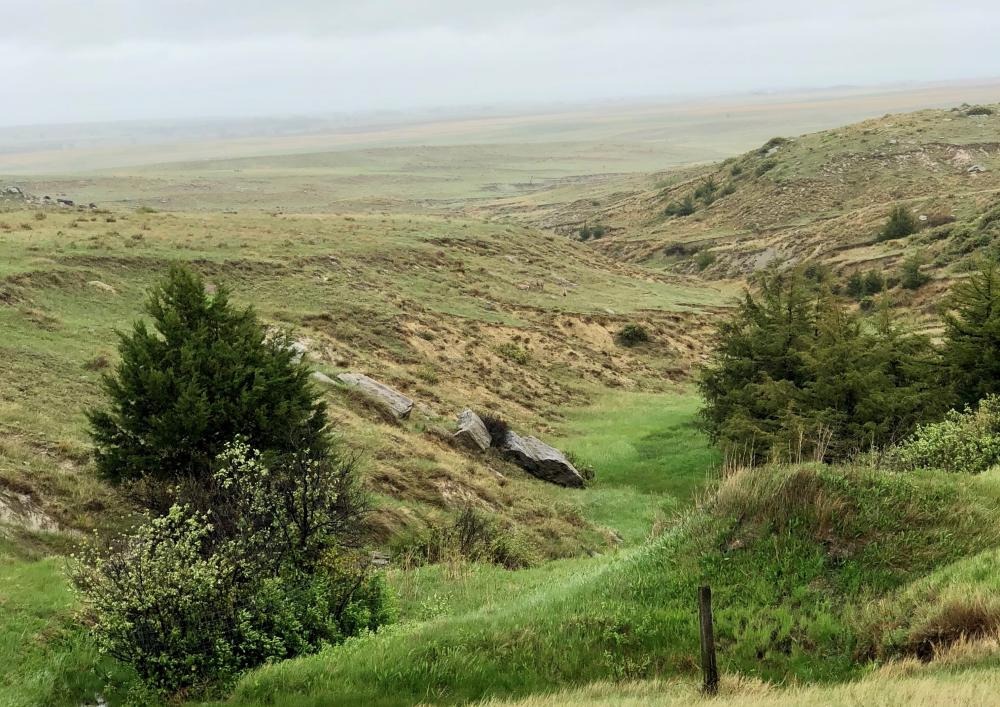
Located approximately 20 miles west of Sterling, Willard is home to a faithful few who choose to live in a rural area off the beaten path. There are a few occupied rural properties on the paved road leading to the community and it has an active rural fire department. But, for the most part, the town itself is completely abandoned. You can still see the old granary and a few old storefronts. The town was originally planned and established in 1888 by the Lincoln Land and Townsite Company of Lincoln, Nebraska. That particular attempt at settlement failed and the town was abandoned but was replotted in 1910. In 1914 the Willard Methodist Episcopal Church was built and was the first church between Sterling and Cheyenne, Wyoming. In its prime time, Willard was home to three-grain elevators, two garages, two general stores, a blacksmith, and a hardware store. In the 1950s an attempt to drill for oil was tried and, after drilling over 5,000 feet, the project was abandoned.
PADRONI
Born of water
At the intersection of County Road 43 and 48
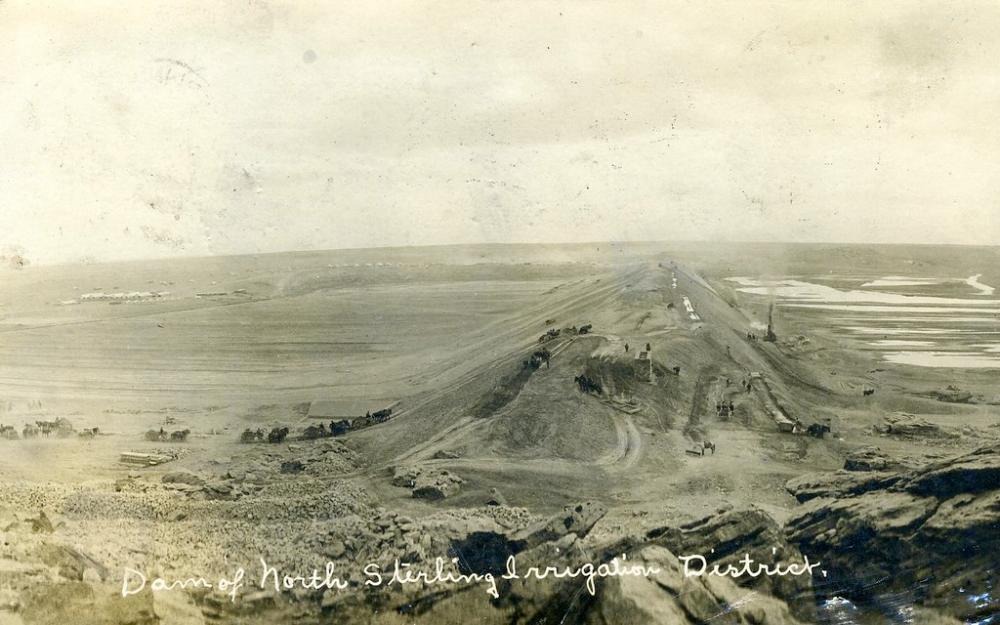
Padroni was platted in 1910, with a post office, store, lumber yard and section house at the railroad siding, all created to serve the construction of the North Sterling Reservoir. As reservoir water became available to irrigate area farms the town grew. In 1928 it had two stores, a garage, pool hall, two elevators, a beet dump, blacksmith, bar, creamery, telephone exchange, depot, school, post office, church and a bank. Today it is home to a post office and a few other entrepreneurial enterprises. An old lumberyard can be seen across the road from the tracks. On the south side of Main Street, the former St. Clare Hotel still stands. The old school on the north side of town was built in 1919 and was famous for its community buffalo suppers in the 1950s. Also on the northwest side of town is the old Baptist Church. The parsonage just north of the church was built in 1945 of dismantled ammunition boxes from the Sioux Army Ordnance Depot in Sidney, Nebraska.
DAILEY
To the faithful, the memories are still strong
25 miles east of Sterling on U.S. Highway 6 East
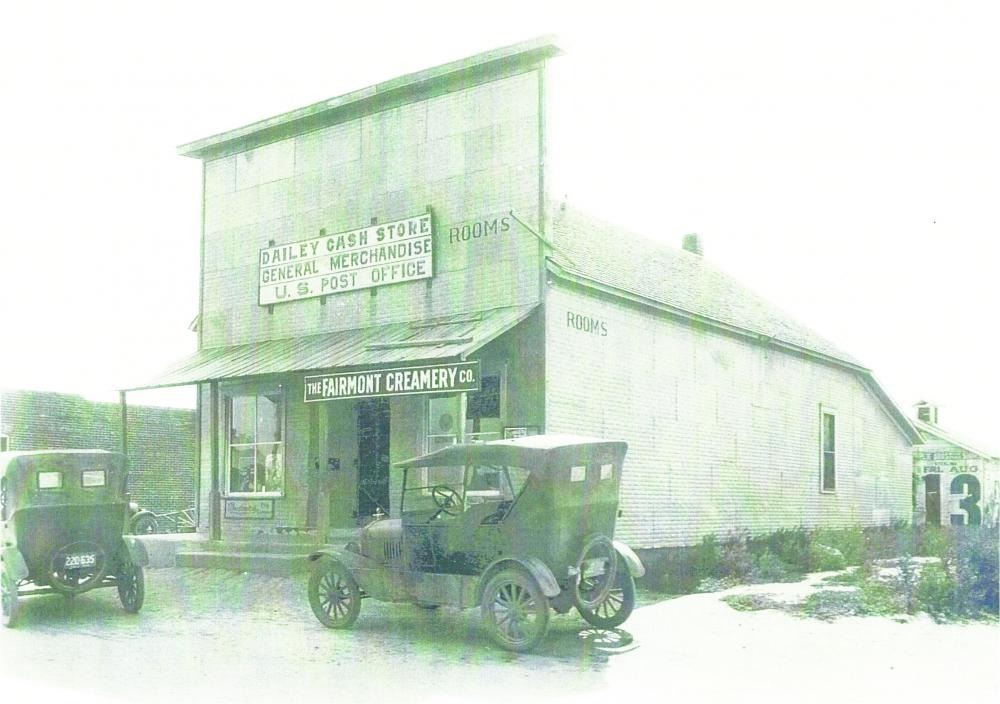
The “Highline” railroad from Sterling to Holdrege, Neb., was built in the early 1900s through eastern Logan County. The first building in the new town of Dailey was a General Store built in 1914 by a few area farmers so that needed supplies would be available. Today, this same “Dailey Cash Store” can be seen and visited at the Overland Trail Museum at Sterling. In 1915, a 12-grade brick schoolhouse was built and completed for the start of school in 1916. This was the first consolidated school in the state and the first to use school busses. The new few years were favorable for farmers, and crops were good; unfortunately, they didn’t last. Though new businesses (including a lumber yard, grain elevator, bank, Chevrolet dealership, blacksmith and several filling stations) were opened, the Dirty Thirties hit and the weather became dry. Sand and tumbleweeds blew into the fence rows. Times turned rough. The grasshoppers ate everything that the rabbits didn’t. U.S. Highway 6 was being built from Sterling east to Nebraska, which enabled people to transport themselves and their goods to larger nearby towns. This was to the detriment of Dailey and other small towns. Dailey never regained strength after the 1930s. Not much of Dailey remains today, but the faithful, the memories remain strong.
ILIFF
Headquarters of the cattle king
12 miles northeast of Sterling on Co. Highway 138
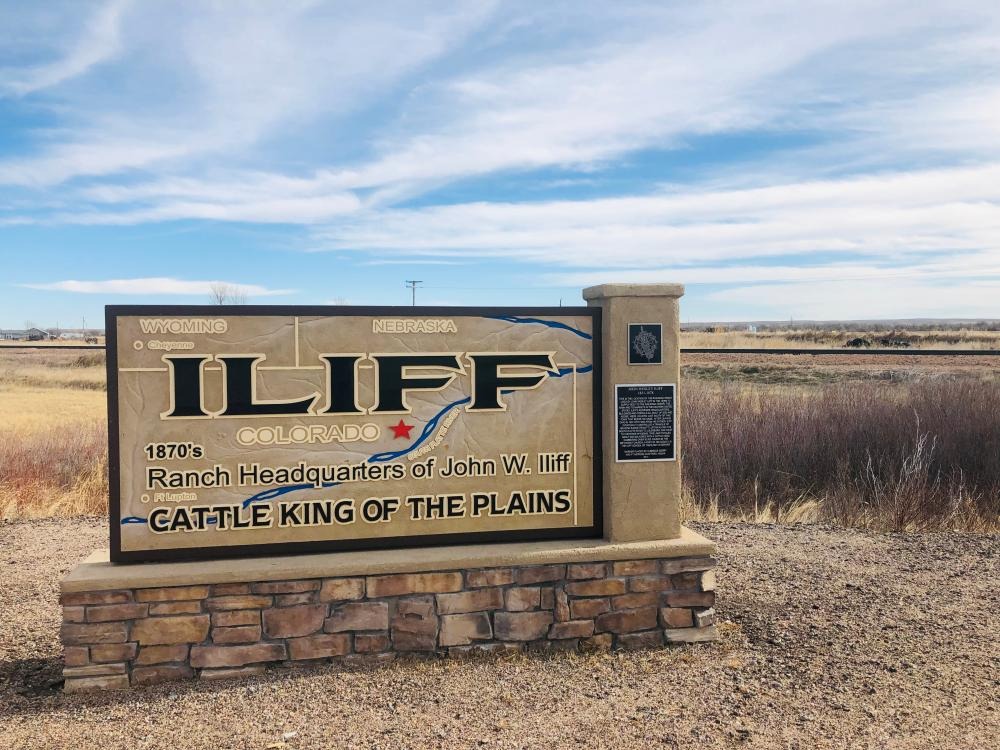
This town was platted in 1887 and named for John Wesley Iliff, a pioneer cattleman of the 1860s and 1870s, who owned 15,000 acres of waterholes and surrounding land in Northeast Colorado, and controlled 150,000 more acres, on which he ran 25,000 to 50,000 head of cattle. He was one of the biggest operators in the region. Today, the Iliff area’s claim to fame is being the home to John Korrey, an international auctioneering champion. It is a large agricultural area where many farms and ranches exist.
The town’s pump dating from 1890 remains in the center of town, but the water is no longer drinkable. St. Catherine’s Catholic Church was built in 1927. The large building alongside the church is the old rectory. Also remaining are the bank and the dance hall/opera house, both built during the early 1900s. In its prime time, Iliff was home to two garages, two pool halls, the post office, a grocery, a mercantile, the Iliff Independent newspaper, school, Baptist Church, hardware, cafe, dentist doctor, drugstore, barber, blacksmith, hotel, livery stable, theater and elevator. It is a bedroom community with most residents traveling to work in Sterling or nearby Sidney, Nebraska.
CROOK
Serving the pioneer spirit
17 miles northeast of Sterling on CO. Highway 138
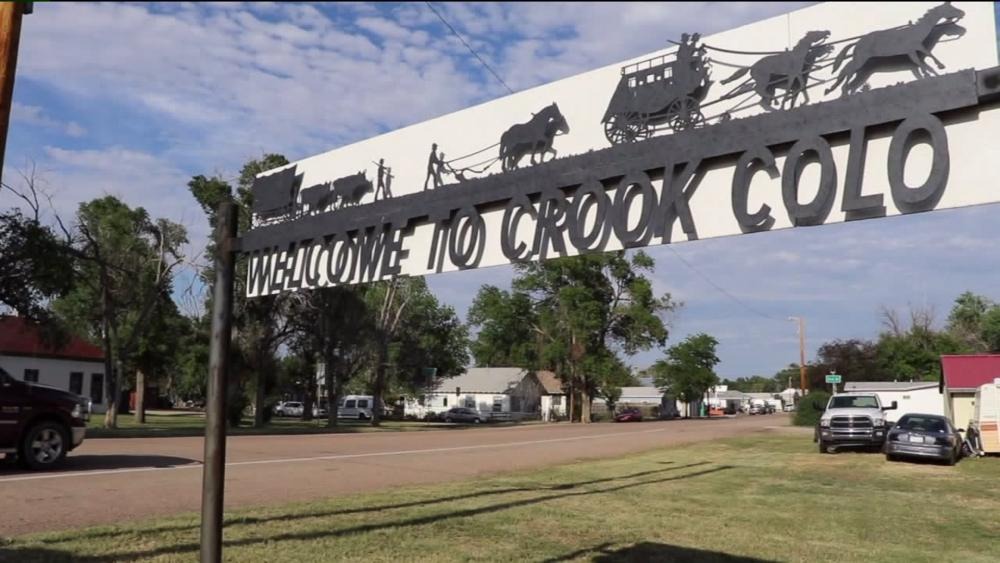
This community was named for Major General George Crook, a Civil War veteran and Indian fighter. The town began in 1881 along the south side of the railroad tracks with a store and post office. By 1928, it had a population of more than 300 residents served by five filling stations, eight churches, four general stores, two elevators, a lumber yard, bank, drug store, hotel, auto dealer, meat market, cafe, blacksmith, creamery, shoe shop, barber, pool hall, telephone exchange, real estate office and post office.
Much of the old downtown of Crook remains along the north side of Highway 138. At the corner of 4th Street and 4th Avenue is the Crook Museum, open by appointment by calling 970-886-2713. It was formerly the Presbyterian Church. Behind the museum is a railroad coach built in 1874. It was moved with wheels and a crane to its present location and is being restored by the Crook Historical Society. Several other old churches are located in the community. You can learn more about the community by visiting the museum.
PROCTOR
Home of the famous Blue Ranch
18 miles northeast of Sterling on CO. Highway 138
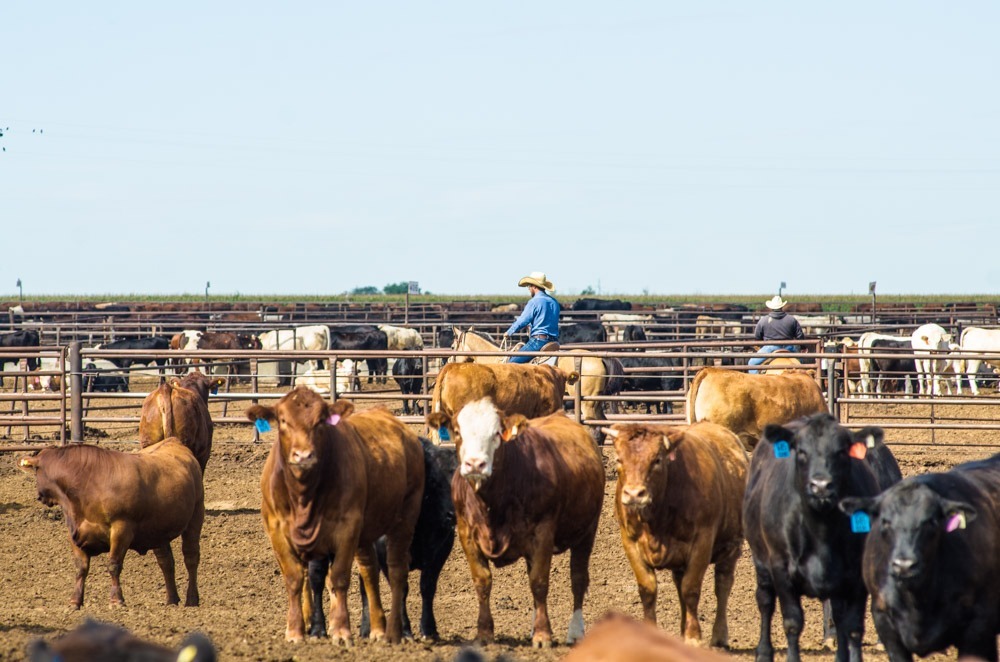
The town of Proctor was established in 1908 and was named after General Proctor, an Indian fighter who had come to Logan County at the same time that General Crook was here. J.D. Blue, a pioneer from Cedar Rapids, Iowa arrived in the area with some friends and purchased a 5,000-acre tract of land surrounding the townsite. As the Union Pacific Railroad was making its way across the west, it built a station on the land it purchased from Mr. Blue. The Proctor State Bank was organized in 1909 and the president was Mr. George A. Henderson, who later established himself in Sterling, where his name appears on a building at the corner of 3rd Street and Main. The Proctor Lumber Company and Lamb and Lamb General Merchandise store was started shortly after the bank. A store, complete with a post office inside, was opened as well. The Great Western Sugar Company eventually maintained a huge sugar beet dump at Proctor to aid in getting one of the area’s main crops to market. A great deal of corn, wheat and hay has always been grown in the area.
Cattle ranching and feedlots continue to thrive here. Today, Proctor is what many would consider a ghost town. There are some residents in the area and remnants from the past include an old blacksmith shop and garage. It is a popular site for quail, pheasant and waterfowl hunting. Fishing in nearby Jumbo Reservoir is some of the best in this part of Colorado.
PEETZ
Land as free as the wind
28 miles northeast of Sterling on CO. Highway 113
Originally named Mercer as a water stop on the railroad, the town was incorporated in 1917, changing its name to Peetz in honor of pioneer homesteader Peter Peetz. In its busiest years, it had over 50 businesses and 450 residents. The present town hall, formerly a bank that survived the Great Depression, still has the original vault and teller counters. At the corner of Main and Railway is an old filling station, with the pump foundations along the street still visible, and the old kerosene pump at the side. Also of interest is the Catholic Church at 621 Logan St. Bradi Barth, a Belgian artist, painted the windows and later recreated them in stained glass. One of the early churches was cut in two and was used to make two similar houses on Logan Street. Several thriving businesses still exist in Peetz, as does a vibrant public school system that serves grades K-12. The Peetz Table Wind Complex is located west of town on the Peetz Plateau. The first phase of its construction became the largest wind farm in the state of Colorado upon its completion in 2001.
